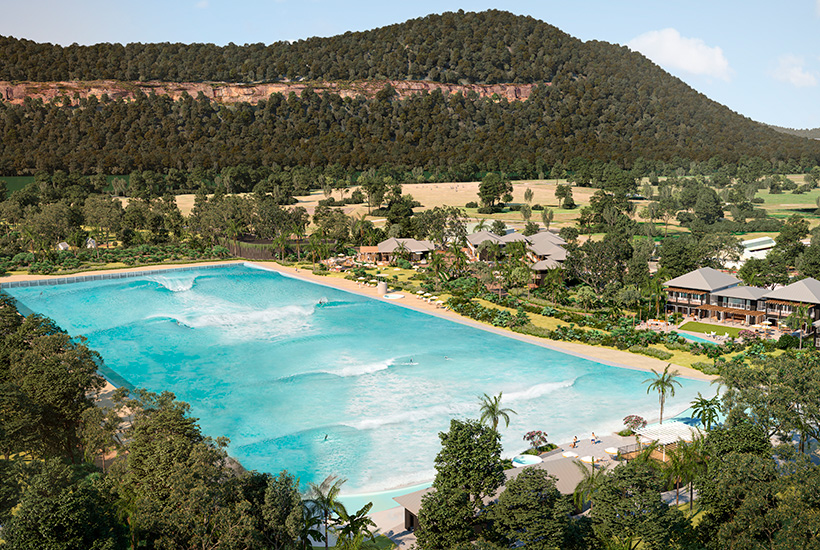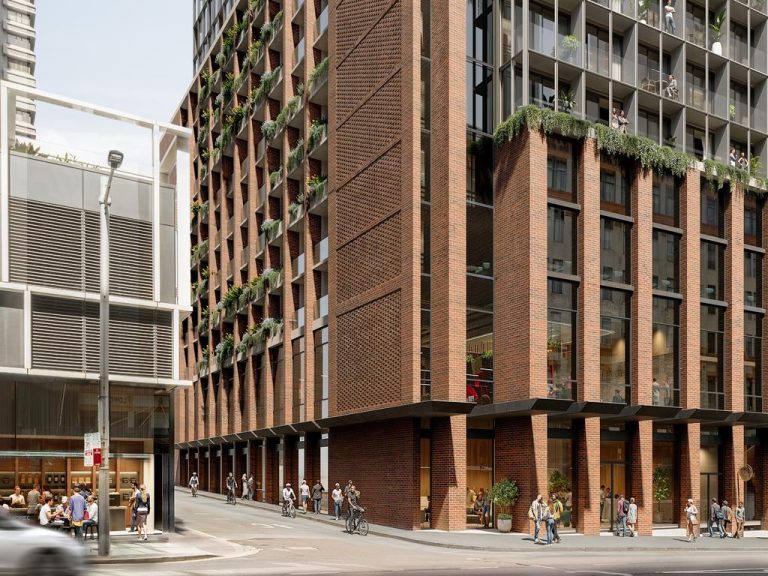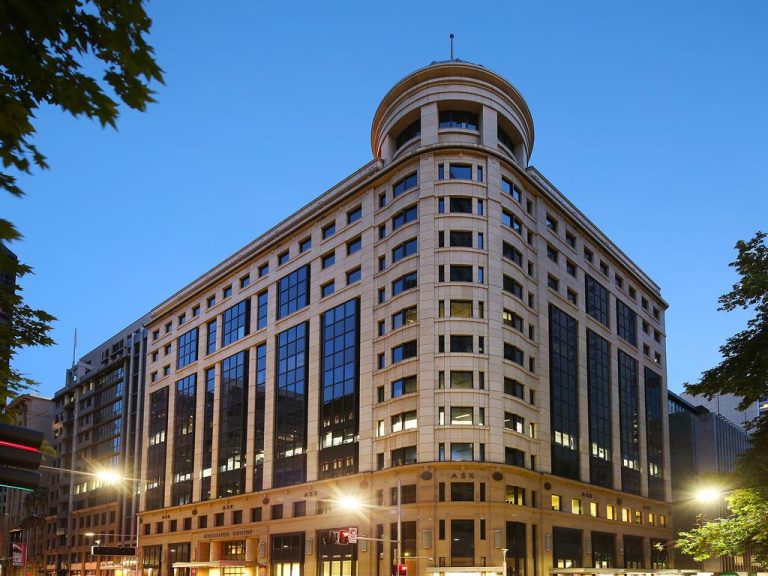‘You need to sell a lot of waves to get a strong return’: investing in a surf park

The glossy masterplan for “Australia’s first private resort-style surfing destination”, at Wisemans Ferry on the Hawkesbury River, is certainly alluring.
To be set among 18.2ha of bushland an hour from North Sydney, the Wisemans Surf Lodge – which is currently looking for investors and is slated to be open next year – will have a 12,600sqm ocean-like, wave-generating pool, a chic hotel, restaurant and six-hole golf course.
According to investor marketing material, it’ll offer “access to perfect surf” and a “reimaging” of the site’s existing resort, complete with a two-storey clubhouse, 54 suites, a 200m deck and a café and bar, “woven between lawns and landscape by Will Dangar”.
With domestic travel tipped to boom given continued uncertainty about international borders, it’s a destination tourism experts believe could be a drawcard if done right.
Lori Modde, general manager of tourism consultancy Visitor Economy Development, said the development could “attract more new markets to the region and possibly encourage past visitors to come back.”
$30,000 to buy into an ‘integrated resort destination’
The company behind Wisemans Surf Lodge, Balnce, which has backing from surfing champions Steph Gilmore and Joel Parkinson, is seeking investment through an unit property trust, with a minimum spend of $30,000.
It’s citing a potential annual yield of 6.15%-6.7%, six-monthly distributions after opening and membership bonuses. Older, high-wealth surfers are among the key investor demographic.
Given surf parks are in their infancy in Australia – just one, Melbourne’s URBNSURF, is operating commercially, while another in Queensland is under development – assessing an investment in one is complex.
Noel Dempsey, business director at Pico Play, a consultancy firm that specialises in the delivery of tourism and leisure attractions, said Wisemans appears to offer an “integrated resort destination”, unlike URBNSURF.
“It’ll include golf, surf, accommodation and hospitality. Combine this with the fact the project will also offer membership opportunities; I think you have a very unique and total resort offering,” he said.
Mr Dempsey said “older, cashed-up” surfers “definitely” represent a key target market, especially given the model allows investors to be involved in a “club-based experience” onsite, as well as earn income.
“Large private investors looking for a fast return in a high-growing sector should be wary (though), as to date, there is limited benchmarking evidence.”
Potential pitfalls of investing in surf parks
There are technical, market and financial-related potential pitfalls in investing in such a new area, Mr Dempsey said.
Technically speaking, the challenge lies with the technology’s “ability to produce waves, the appeal to new and existing surfers and the quality of the experience (to prompt) return.”
“From a market point of view, developments need to carefully consider the market they’re looking to attract, as the delivery of technology and the overall offer may need to be different.
“Is the market potential to an existing, experienced surfer market or are we looking to attract new users and beginners? Both markets have merit, but I’d be wary of trying to be ‘all things’ to all visitors.”
Mr Dempsey’s advice echoes that of Matt Hyslop, the UK-based head of destination consulting for Colliers International, who was a feasibility adviser for Surf Snowdonia in north Wales, the UK’s first artificial surfing lake. He said developers need to consider what roles different “elements” play.
“This can be broken down into attractors, infrastructure and services. Attractors provide the reason for the visit, principally the surf lagoon, but what about other things to do? The infrastructure enables an easy visit and involves functional things, like car parking,” he said.
“Services satisfy visitor needs and drive spending and importantly involve good staff layering on a great customer experience. This might include food, drink, hospitality, retail, events and overnight accommodation.”
When it comes to the financial risks, it’s all about scale, as surf parks will have a natural capacity limit, Mr Dempsey said.
“It’s important to do a detailed business feasibility and sensitivity, to understand all of the other factors that go into the revenue delivery. This includes the number of surfers, the occupancy of sessions, the mix of wave types and price points that make the experience viable.
“You won’t be operating a maximum capacity every day of the year, so you need to accurately forecast the expected returns over a full year and the longer term.”
It’s easy to be “seduced by the wave” – the attractiveness of a unique attraction – without fully appreciating what’s required to deliver an appropriate return on investment, Mr Dempsey said.
“You need to sell a lot of waves to get a strong return.”
Just as surfers study a break to pick the perfect wave, would-investors should do their homework too.








